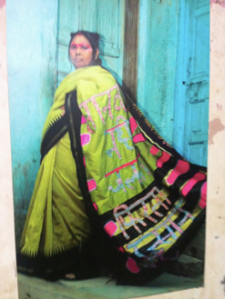I was recently taken on a tour of an arts project in the largest of Mumbai’s slums. The focus of this amazing work is engaging the community in a conversation about violence against women and sexual health. The Dharavi Biennale is the brainchild of SNEHA, a wonderful organisation I have had the privilege of working in partnership with for a number of years. Alongside their life changing work in maternal and newborn health and brilliant prevention of early childhood nutrition projects they also have one of the world’s largest prevention of violence again women and children initiatives, headed up by the amazing Dr Nayreen Daruwalla.


Nayreen and David Osrin (a Wellcome Professor who has been collaborating on some groundbreaking research projects with SNEHA for many years) recently published their research on classifying women’s death from burns in India. This is a horrific issue, on more than one level, that particularly affects the poorest communities in India; most of these deaths occur by accident in women in loose fitting saris and shalwars, often made from cheap-flammable fabrics, cooking on floor-standing hobs with open flames. However, a small but significant number occur are due to homicide and suicide strongly linked to spousal/family abuse and a phenomenon known as ‘Dowry Death’.
Whilst Nayreen and David were showing me round the Dharavi Biennale, a journalist arrived to discuss their recently published research. There was a clear agenda attached to the interview. The journalist wanted a headline-grabbing statistic on the number of women victims of ‘Dowry Death’ and the general inadequate response by the police. Firstly, this was not the aim of the research, it was a case study, not looking at large numbers but rather concentrating on detailed interviews from a small number of participants. Secondly, it was not assessing the effectiveness of the police response but rather assessing how burns victims’ deaths were classified (e.g. as accidental death, homicide or suicide). To try and draw out population level statistics from this: “XX% of women admitted to hospital with burns are a case of Dowry Death” is both inaccurate and irresponsible.
And most important of all, Nayreen’s prevention of violence against women and children initiative relies on working closely with the police for to safeguard the lives of many vulnerable women and children. By associating the work they do with allegations of policy inadequacies, such potential assertions made by a journalist could have a very real and dangerous impact on her work.
Scientific research rarely supports a simple yes/no hypothesis. Trying to over-simplify and use headline-grabbing tactics to present this work only deepens the distrust between the scientific and the wider community and at times this can have life-threatening implications. As with everything in life it is multifaceted, however this doesn’t mean it is too complex to understand, just complicated…